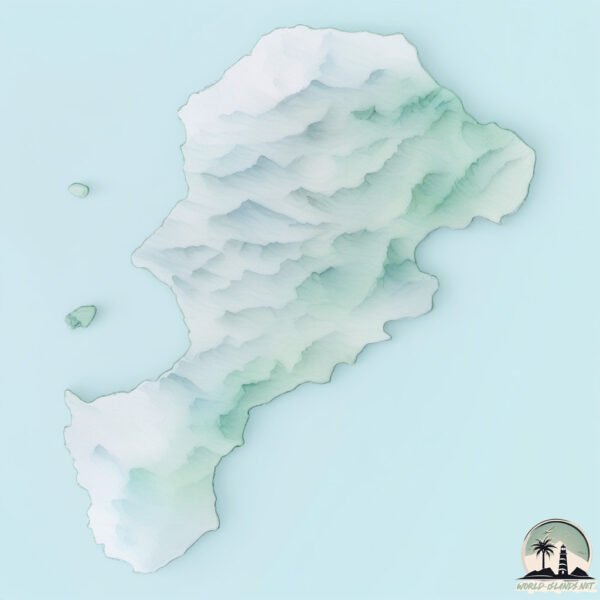Camiguin

Welcome to Camiguin, a Tropical island in the Philippine Sea, part of the majestic Pacific Ocean. This guide offers a comprehensive overview of what makes Camiguin unique – from its geography and climate to its population, infrastructure, and beyond. Dive into the details:
- Geography and Size: Explore the island’s size and location.
- Climate and Weather: Weather patterns and temperature.
- Topography and Nature: Uncover the natural wonders of the island.
- Infrastructure and Travelling: Insights on reaching, staying, and making the most of your visit.
- News and Headlines: Latest News.
Geography and size of Camiguin
Size: 244.5 km²
Coastline: 69.3 km
Ocean: Pacific Ocean
Sea: Philippine Sea
Continent: Asia
Camiguin is a Large Island spanning 245 km² with a coastline of 69 km.
Archipel: Malay Archipelago – The world’s largest archipelago, located between mainland Southeast Asia and Australia, known for its immense biodiversity and cultural diversity.
Tectonic Plate: Okhotsk – Located in the northwest Pacific Ocean, the Okhotsk Plate encompasses the Sea of Okhotsk, the Kamchatka Peninsula, and parts of Japan. It’s involved in complex interactions with the Pacific and North American plates, contributing to seismic activity in the region.
The geographic heart of the island is pinpointed at these coordinates:
Latitude: 9.17213114 / Longitude: 124.71758117
Climate and weather of Camiguin
Climate Zone: Tropical
Climate Details: Tropical Rainforest Climate
Temperature: Hot
Climate Characteristics: This climate is typified by heavy rainfall throughout the year, high humidity, and consistently high temperatures, leading to lush rainforests and rich biodiversity. Seasonal temperature variations are minimal.
Topography and nature of Camiguin
Timezone: UTC+08:00
Timezone places: Australia/Perth
Max. Elevation: 1630 m Mt. Mambajao
Mean Elevation: 342 m
Vegetation: Evergreen Broadleaf Forest
Tree Coverage: 75%
The mean elevation is 342 m. Dominating the island’s landscape, the majestic “Mt. Mambajao” rises as the highest peak, soaring to impressive heights. The island is characterized by Mountains: High, steeply elevated landforms. Characterized by both a high maximum elevation (over 500 meters) and a high mean elevation, creating rugged, mountainous terrains on islands.
Dominating Vegetation: Evergreen Broadleaf Forest
Characterized by dense, lush canopies of broadleaf trees that retain their leaves year-round. These forests are typically found in tropical and subtropical regions and are known for their high biodiversity. Camiguin has a tree cover of 75 %.
Vegetation: 9 vegetation zones – Very Highly Diverse Island
Islands in this range are ecological powerhouses, showcasing a wide array of vegetation zones. Each zone, from lush rainforests to arid scrublands, coastal mangroves to mountainous regions, contributes to a complex and interdependent ecosystem. These islands are often hotspots of biodiversity, supporting numerous species and intricate ecological processes.
Infrastructure and Travelling to Camiguin
Does the island have a public airport? yes.
Camiguin has a public and scheduled airport. The following airports are located on this island: Camiguin Airport.
Does the island have a major port? no.
There are no major ports on Camiguin. The closest major port is GINGOOG, approximately 45 km away.
The mean population of Camiguin is 374 per km². Camiguin is Moderately Inhabited. The island belongs to Philippines.
The name of the island resonates across different cultures and languages. Here is how it is known around the world: Arabic: مينداناو; Spanish: Mindanao; French: Mindanao; Portuguese: Mindanau; Russian: Минданао; Chinese: 棉兰老
Continuing your journey, Bohol is the next notable island, situated merely km away.
Travel Camiguin this 2025 | 2 Day Itinerary Philippines



Philippines is classified as Emerging region: G20: Group of Twenty – Major economies comprising both developed and emerging countries, representing the world’s largest economies. The level of income is Lower middle income.
News – Latest Updates and Headlines from Camiguin
Stay informed with the most recent news and important headlines from Camiguin. Here’s a roundup of the latest developments.
Please note: The data used here has been primarily extracted from satellite readings. Deviations from exact values may occur, particularly regarding the height of elevations and population density. Land area and coastline measurements refer to average values at mean high tide.
